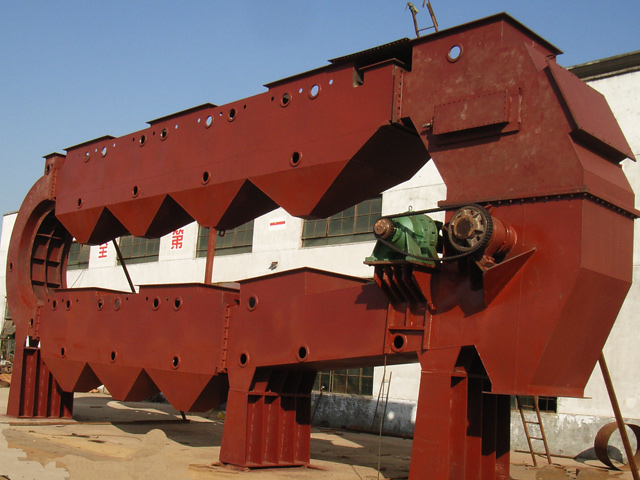Rice bran oil, also known as rice oil, is a nutritious edible oil. The fatty acid composition, vitamin E, sterol, oryzanol contained in rice bran oil is beneficial to the body's absorption, and the absorption rate after eating is more than 90%. The raw material for the production of rice bran oil is rice bran, and its oil content is about 10-23%. If you use the pressing method to produce rice bran oil, the residual oil rate is about 6-7%, and the oil yield is low. Oil plants mostly use the leaching method of rice bran oil extraction equipment to produce rice bran oil, and the residual oil rate is less than 1%. The production process of leaching rice bran oil can be divided into three parts: rice bran pretreatment, rice bran oil leaching and rice bran oil refining process. Let's first look at the pretreatment process of rice bran:
The pretreatment of rice bran includes processes such as separation, conditioning, puffing, and drying.
The rice bran is separated first to remove the broken rice and coarse bran shells and other impurities in the rice bran, and then the puffing machine is used to change the texture of the rice bran
Rice bran first needs to pass through a bran separation sieve to remove impurities such as broken rice and coarse bran shells in the rice bran. After cleaning, the rice bran is sent to the tempering pot to adjust the temperature and moisture to a state suitable for puffing. The function of puffing is to destroy the cell tissue of the rice bran, change the porosity inside the rice bran, increase the permeability inside the rice bran, and improve the efficiency of rice bran leaching. It must be dried before leaching, which is more conducive to storage of rice bran, and the moisture and temperature of rice bran are also conducive to leaching.

Rice bran oil extraction process:
The rice bran oil leaching process is divided into four major systems: material leaching, wet meal desolventization, mixed oil evaporation and solvent recovery.
The pretreated rice bran enters the rice bran oil leaching equipment through the conveying equipment, and uses the principle of organic solvent extraction to fully contact the rice bran cake by spraying, soaking, etc., and extract the oil from the rice bran to obtain the mixed oil, and then use the oil and The boiling point of the solvent is different, evaporation and stripping are carried out to vaporize the solvent and separate it from the oil to obtain crude rice bran oil.
Rice bran oil refining process:
The rice bran oil produced by the leaching method contains various impurities, such as meal powder, plant fiber, phospholipids, free fatty acids, pigments, moisture, solvents, etc. These impurities cause the oil to be prone to rancidity, and some oils It will contain harmful elements and heavy metals, which will cause harm to the human body after eating. Therefore, the leached oil must be refined by rice bran oil refining equipment to remove impurities, solvents and harmful elements in the fat before it can be eaten. Rice bran oil refining equipment has six main processes, namely degumming, deacidification, dehydration, decolorization, deodorization, and dewaxing. After these six processes are refined, the grease can remove harmful substances and most of the impurities. Refining can improve the quality and edible safety of rice bran oil, as well as increase the storage time of the oil.
The above are the three production processes for the production of rice bran oil by leaching. Rice bran is a kind of raw material that is easily acidified. It needs to be pretreated in time to reduce the impact and increase the storage time. Therefore, the rice bran oil manufacturer should choose a place close to the raw materials as much as possible when choosing a plant site, so as not to affect the quality of rice bran due to transportation time.
Copyright © Henan Zhongxing Grain And Oil Machinery Co.,Ltd. All Rights Reserved. Powered by MetInfo